#soft little friend. the label says he is called Otis.
Text
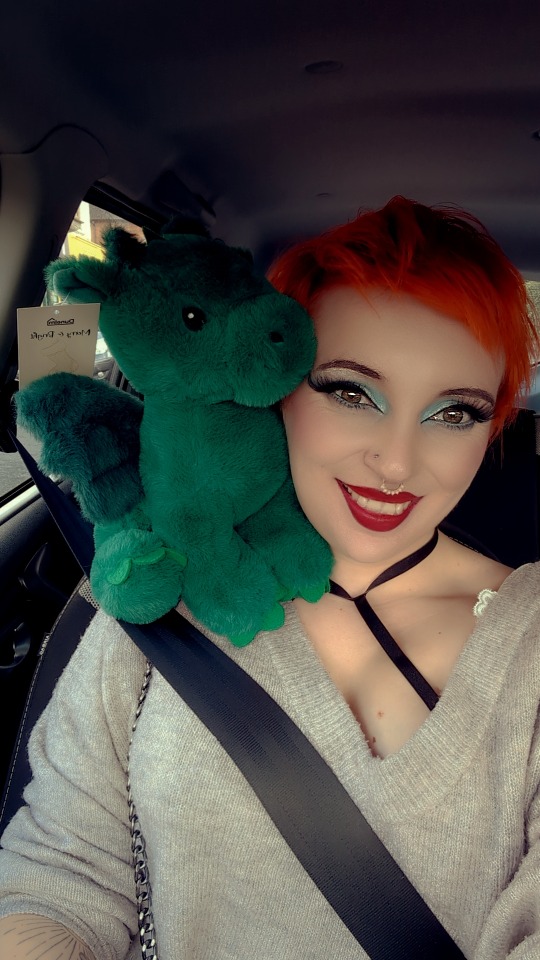

important life update: NEW BESTIE ACQUIRED. 🐉
#i am the mother of dragons#soft little friend. the label says he is called Otis.#he is so soft and fluffy and i couldnt put him down when i saw him after walking into the homeware shop#dogs have already tried to steal him from me once.
173 notes
·
View notes
Text
LUCY AND ANDY GRIFFITH
S6;E8 ~ October 29, 1973
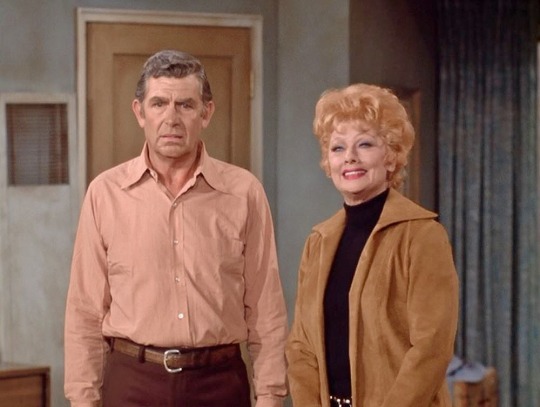

Directed by Coby Ruskin ~ Written by Robert O'Brien
Synopsis
When Lucy meets a charismatic man (Andy Griffith) raising money for underprivileged youth in the park, Kim decides to investigate to see if he's really who he says he is.
Regular Cast
Lucille Ball (Lucy Carter), Gale Gordon (Harrison Otis Carter), Lucie Arnaz (Kim Carter)
Guest Cast
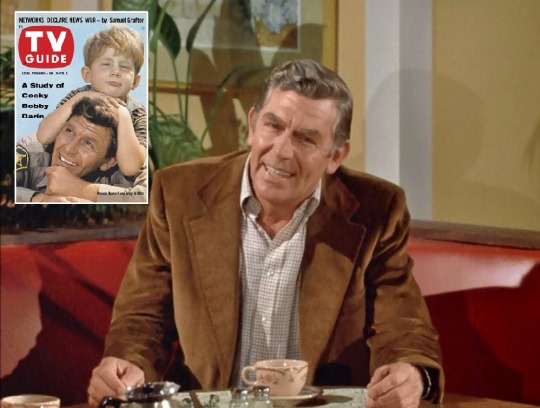
Andy Griffith (Andy Johnson) was a former music teacher. He began his screen career in 1948 on variety shows hosted by Ed Sullivan and Steve Allen. In 1955 he was nominated for a Tony Award for his appearance on Broadway in No Time for Sergeants. He also appeared in the 1958 film version of the play. In 1960 he appeared with Danny Thomas on “Make Room for Daddy” as Sheriff Andy Taylor and the character was spun-off into his own series “The Andy Griffith Show.” He stayed with the show until 1968. That same year he appeared on “The Tennessee Ernie Ford Special” on NBC with Lucille Ball. He also appeared as Andy Taylor on two episodes of “Gomer Pyle: USMC.” In 1971 he starred in “The New Andy Griffith Show” which lasted only one season. He had another hit series in 1986 with “Matlock” which ran until 1995. Griffith died in 2012 at age 86.

Sid Gould (Policeman) made more than 45 appearances on “The Lucy Show,” all as background characters. This is one of his nearly 50 episodes of “Here’s Lucy.” Gould (born Sydney Greenfader) was Lucille Ball’s cousin by marriage to Gary Morton.
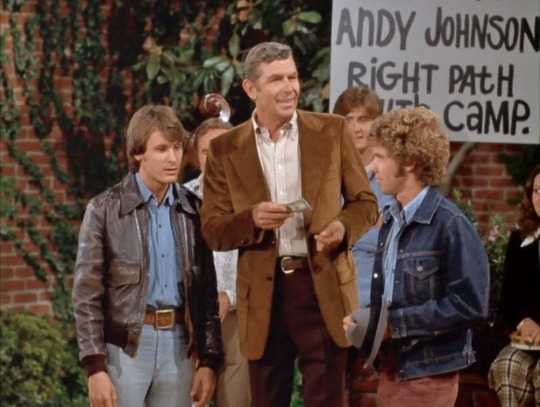
Randall Carver (Henry, left) began his career in 1969 and is best remembered as John Burns on the first season of “Taxi” (1978-79). This is his only appearance with Lucille Ball. He was 27 years old when he appeared in this episode.
Rick Kellman (Jerry, above right) played Lucille Ball and Bob Hope's son in the film Critic's Choice in 1963. He started acting at age 6 and is best remembered for playing Randy in “The Dennis O'Keefe Show” (1959-60) and Tommy in “Our Man Higgins” (1962-63). A year after this appearance on “Here's Lucy” he left show business.
The character's name is not spoken aloud, just listed in the final credits.
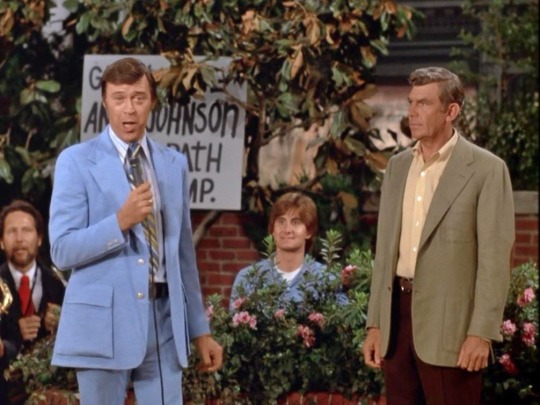
Hank Stohl (Bill Adams) began his career in 1959 and was the voice on the radio on “The Waltons” from 1977 to 1980. This is his only appearance with Lucille Ball.
Bob Whitney (Stage Manager) appeared with Lucille Ball in The Facts of Life (1960). This is the second of his five appearances on the series.
The character has no lines. He tallies the donations on a chalk board at the end of the episode.
Marl Young (Conductor) was the musical director for “Here's Lucy” as well as making several on-camera appearances when the shows included live music.
Vocalists: Nancy La Mar, Rosemary O'Brien, Dave Anderson Stuart, and Marvin Robinson
The musicians and others in the park and restaurant are played by uncredited background performers.

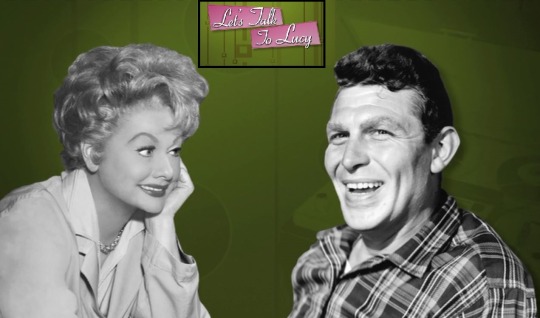
In March 1965, Lucille Ball interviewed Andy Griffith for two installments of her CBS radio show “Let's Talk To Lucy” while he was still playing Sheriff Andy Taylor on TV.
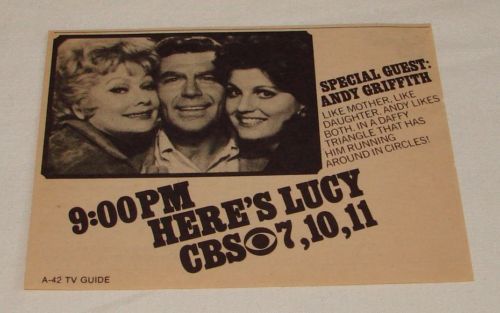
Six Degrees of Lucy! Although none of Lucille Ball's TV incarnations ever came face to face with Sheriff Andy Taylor, they traveled in the same TV world:
In 1959, the year before Andy Taylor met Danny Williams on “Make Room for Daddy”, Danny Williams and family met Lucy Ricardo and family on a 1958 episode of “The Lucy-Desi Comedy Hour.”
Keith Thibodeaux, who played Lucy Ricardo's son, Little Ricky, played Opie's pal Johnny Paul Jason in 13 episodes of “The Andy Griffith Show” between 1962 and 1966.
Gomer Pyle, who lived in Mayberry, joined the Marines and was spun off in his own series “Gomer Pyle USMC” when he made a brief appearance on “The Lucy Show” in 1966.
“The Andy Griffith Show” had a sequel series titled “Mayberry RFD” starring Ken Berry, a protégé of Lucille Ball's who had appeared on “The Lucy Show” in 1968.
All of these shows were filmed on the Desilu backlot (formerly RKO, later Paramount).

Don Knotts, who played Andy Griffith's bumbling sidekick Deputy Barney Fife, guest starred in “Lucy Goes on Her Last Blind Date” (S5;E6). Some other “Lucy” actors who frequently showed up in Mayberry include Hal Smith, Parley Baer, Norman Leavitt, Amzie Strickland, Dub Taylor, Stanley Farrar, Will Wright, Herbie Faye, Jonathan Hole, Byron Foulger, Tol Avery, Reta Shaw, Lurene Tuttle, Ruth McDevitt, Ruta Lee, Jay Novello, Ross Elliot, Maxine Semon, Herb Vigran, and Sid Melton.
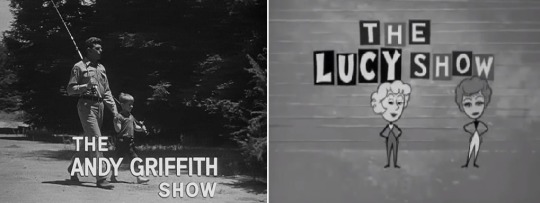
There are some very basic similarities between “The Lucy Show” and “The Andy Griffith Show.”
Both Griffith and Ball used their own first names, which consist of four letters ending in ‘y’ and also appear in the title.
Both characters have spouses that died before the series' begins.
Both have children and faithful sidekicks.
Both started filming in black and white and eventually aired in color.
Both shows ended in early 1968 only to be re-born in the fall as newly-titled shows: “Here's Lucy” and “Mayberry RFD.”
The Christian overtones in this episode are unusual for this series. A few weeks earlier Kim jokingly said that they missed church on Sunday!
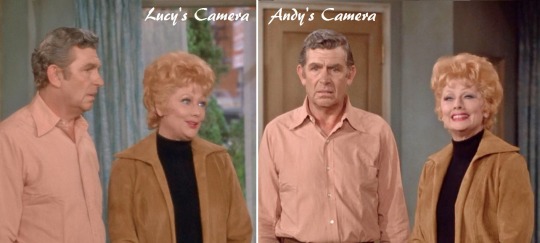
When Lucy and Andy are in the same shot together it becomes visibly clear that Lucille Ball is being filmed by a camera with a filtered lens to soften her look, while the other camera remains unfiltered. The contrast is especially noticeable when Lucy is standing next to Andy in the motel room and goes in and out of soft focus depending on which camera angle is used.
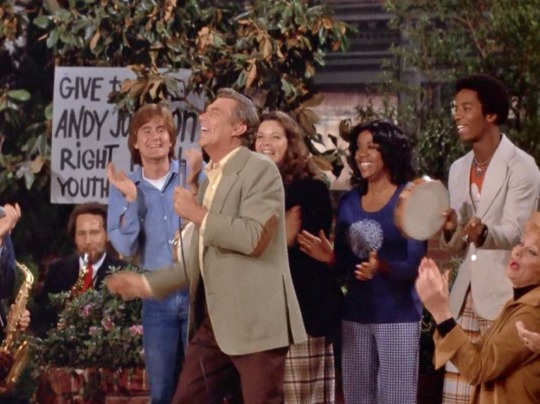
The show opens with Andy and his back-up singers performing “I'll Fly Away” by Albert E. Brumley. First published in 1932 it has been called the most recorded Gospel song of all time. Andy passes the hat for donations for his Right Path Youth Camp in Northern California – only getting thirty eight cents.

At a local restaurant, Andy Johnson tells Lucy that after he came out of the service he became a Sheriff. Lucy responds with disbelief: “A Sheriff!” Although he had left the role of Sheriff Taylor in 1969, Griffith would play him again in the 1986 TV movie “Return to Mayberry.” He would play another Sheriff on “Adams of Eagle Lake,” a 1975 police drama that lasted just two episodes on ABC. The two episodes were later issued on DVD under the titles “Deadly Game” and “Winter Kill.”
Andy tells Lucy his fiancee Alice ran off with his best man Charlie.
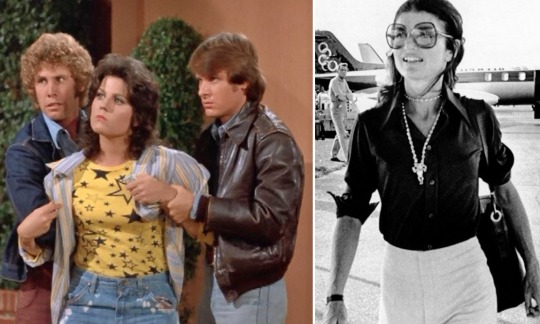
Dressed in her downmarket blue jeans, Kim says “What do I look like? Jackie Onassis.” Jacqueline Lee Bouvier Kennedy Onassis (1929-94) was first mentioned in “Lucy Visits the White House” (TLS S1;E25) in 1963, when she was First Lady of the United States. She married Greek millionaire Aristotle Onassis in 1968.

On Bill Adams' TV show, Andy and his singers perform “I'm Gonna Write a Song” by Jerry Reed and released in 1973. They raise $464.00 for the Right Path Youth Camp – quite a step up from their initial take of thirty eight cents!

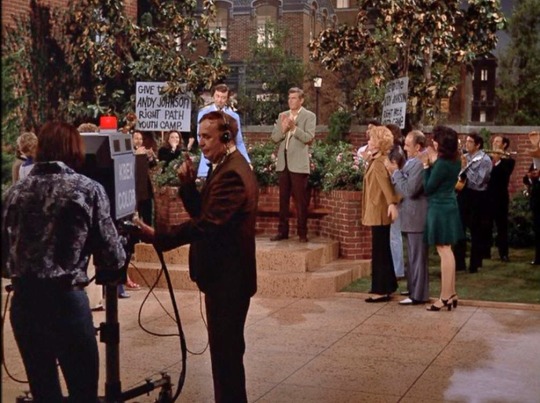
The TV camera is labeled ‘KBEX COLOR.’ KBEX were the call letters for fictional TV and radio stations. They were used in many TV shows and films, including in Desilu’s “Mannix” and “Mission: Impossible.” They were first used on “Here’s Lucy” in “Lucy Is Really in a Pickle” (S5;E15) and most recently in "Lucy, the Wealthy Widow" (S6;E4). Starting in 2005, the FCC (Federal Communications Commission) started using KBEX for actual broadcast stations. Similarly, the 555 telephone exchange is used exclusively for fictional numbers seen in films and television. Here, the telethon number on the chalkboard is 555-8732.

Lucy Ricardo also meet a charity organization in a public park in “Lucy's Last Birthday” (ILL S2;E25). They were called The Friends of the Friendless.
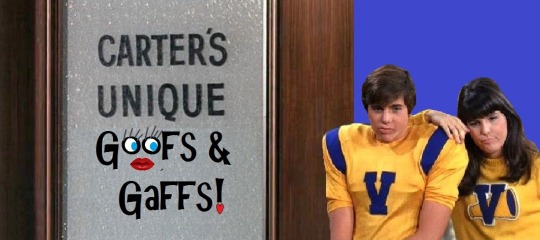
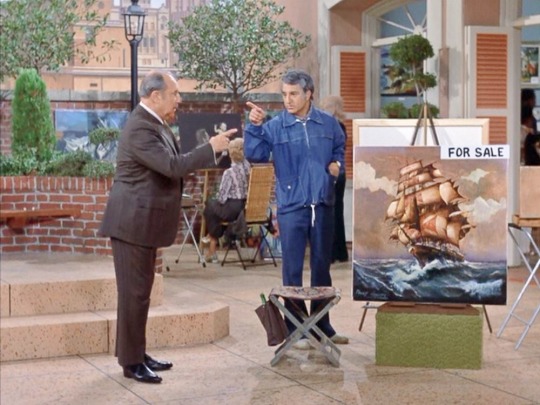
Recycling! The exterior plaza where Andy sings in the first scene is the same one used for the gallery courtyard in “Lucy and Danny Thomas” (S6;E1). The red booth in the restaurant also makes the rounds. It has been seen many different restaurants throughout the series.
Character Consistency! Lucy says that Kim works for a talent agency. In “Kim Cuts You-Know-Whose Apron String” (S3;E24) she said she worked for a Public Relations firm.

“Lucy and Andy Griffith” rates 1 Paper Heart out of 5
This is an unusual and awkward episode – not funny or serious. The chemistry between Andy and Lucy is given short shrift in favor of Kim's suspicions about his veracity. When she allows Andy (an older, single man from out of town) to bring her to his run-down motel room things just get weird. Then he turns her over his knee and spanks her with his slipper, and things turn from weird to uncomfortable. This sort of thing might have passed for funny in 1953, but not in 1973. She leaves the room through a window (luckily they were on the first floor) after writing on the mirror in shaving cream “You are a nice man.” Huh? There's also an undertone of religion (gospel songs, mentions of 'the Lord'), something that Lucy meticulously avoided throughout her television career. The only exception to this unpleasantness is the brief scene where Lucy schools Andy in how to relax on television. This must have been something that Lucille Ball did when coaching young actors as part of the Desilu Playhouse. There are so many ways Andy Griffith could have been used on “Here's Lucy,” but this seems the least satisfactory showcase for his talents.

#Here's Lucy#Lucille Ball#Lucie Arnaz#Gale Gordon#Andy Griffith#Sid Gould#Coby Ruskin#Bob O'Brien#Randall Carver#Rick Kellman#Hank Stohl#Bob Whitney#Marl Young#Nancy La Mar#Rosemary O'Brien#Dave Anderson Stuart#Marvin Robinson#The Andy Griffith Show#Mayberry RFD#I'll Fly Away#Gospel Songs#Jackie Onassis#I'm Gonna Write a Song#KBEX#1973#CBS#TV
4 notes
·
View notes
Text
Bryan Ferry on how Roxy Music invented a new kind of pop: 'We were game for anything'
More than 45 years ago, a new group released their first album. They didn’t wear denim, nor had they, apparently, paid their dues. Indeed, their heavily stylised presentation – a model posed archly on the cover in a 1950s pastiche, the musicians inside clad in leopardskin and leather with styled quiffs – could not have been more opposed to the rock modes of the day. “Is this a recording session or a cocktail party?” inquired Ferry’s friend Simon Puxley in the liner notes. Before you even got to the music, the record cover was a gauntlet thrown down – an explosion of glamour in a wasteland of faded blue cotton.
“The clothes we were wearing at that time would have put off quite a large chunk of people,” reflects Bryan Ferry. “What I liked about the American bands, the Stax label and Motown, they were into presentation and show business, mohair suits, quite slick. And the cover art, I thought of all the American pop culture icons, Marilyn Monroe: selling cigarettes or beer with a glamorous image. But it was a bit off-kilter as well; there was something a bit strange about it, futuristic as well as retro. All that, instead of a picture of the band, in a dreary street, looking rather sullen. Which was the norm.”
Timeline
Bryan Ferry: his career highlights
1971
Roxy Music form
Bryan Ferry was working as a ceramics teacher in a girls' school after leaving art school in Newcastle, having already played with Roxy bassist Graham Simpson in the band the Gas Board. They began amassing band members, including Brian Eno, eventually recruiting the final piece of the Roxy puzzle, guitarist Phil Manzanera.
1973
For Your Pleasure
Roxy Music's self-titled debut was a hit, as was this second album, which reached No 4 in the UK. It would be the last album with Eno, and features some of Ferry's most evocative performances, from the debonair strut of Do the Strand to the creepy In Every Dream Home a Heartache.
1974
Love is the Drug
Love is the Drug, from the Country Life album, is perhaps the most enduring Roxy hit – an irrepressible disco stomp, with Ferry peacocking through it with a magnificent staccato delivery. It was the band's only US hit, and reached no 2 in the UK.
1976
Let's Stick Together
During a two-year Roxy hiatus, Ferry released a pair of solo albums, with the title track from Let's Stick Together hitting the top five. It's a cover of the blues song by Wilbert Harrison, and Ferry has proven adept at covers down the years – his debut solo album in 1973 featured versions of everything from Piece of My Heart to Sympathy for the Devil, while Roxy Music's cover of John Lennon's Jealous Guy became the band's only No 1 single.
1982
Avalon
The final Roxy Music album was a long way from the fiendishly psychedelic art pop of their first records – it helped define the slick sound of 80s soft rock with tracks such as More Than This. It was released a month before his wedding to Lucy Helmore, a marriage that lasted until 2003.
1990
Fourth son Merlin born
Ferry has four sons: Otis, Isaac, Tara and Merlin. The latter survived a terrible car crash in 2014, while Otis became infamous for his support of fox hunting.
2001
Roxy Music reform
Roxy Music reformed for their 30th anniversary, and went on to tour in 2005, 2010 and 2011. Ferry continued to release solo work, including more cover versions – an album of jazz standards, As Time Goes By, was followed by an album of Dylan songs, Dylanesque.
2010
Olympia
After teasing new Roxy Music tracks for a number of years, including sessions with Eno, Ferry released the songs on his solo album Olympia, which also features Nile Rodgers, David Gilmour, Johnny Greenwood and Flea – plus Kate Moss on the cover.
Thank you for your feedback.
The music inside lived up to the cover’s challenge: a collage of pop-culture nostalgia, hard-rock guitar, piano-driven melodies, stylised high vocals, strange musical structures and experimental sound pictures. Roxy Music’s eponymous album sounded like nothing else in 1971 and 1972 – and like nothing else the group would ever attempt again. Recorded in the first full flush of inspiration, songs such as Ladytron, The Bob (Medley), and Sea Breezes exist outside of their time: a radical synthesis that mapped the future at the same time as it plundered the past.
Watch Roxy Music performing Ladytron on The Old Grey Whistle Test in 1972
“We were definitely trying to show our versatility,” says Ferry now. “I had lots of musical influences, plus what the band brought to the table.” Lead guitarist Phil Manzanera, he says, “had this Latin heritage, being born in South America”. Saxophone and oboe player Andy Mackay was classically trained. “[Brian] Eno with his deep interest in experimental music. They were specialists in their field. Paul Thompson brought a lot, with his very powerful, earthy drumming, which was one of the features of the Velvet Underground.”
The cover of Roxy Music immediately marked it out from the rest of 1972’s fare
Ferry is talking in his west-London studio. We walk past repeated Warhol Marilyns and sit under a large print of Jerry Hall on the north coast of Anglesey, the cover for Roxy Music’s fifth album, Siren. Wearing a blue jacket, V-neck pullover and tie, Ferry is measured, at once diffident and supremely assured. At 72, he looks great. “The only bit I don’t like is analysing it,” he says of his work. “I do sometimes envy the people who don’t ever have to describe what they’re doing.”
Despite its age and apparent familiarity, Roxy Music’s debut remains thrillingly strange. A new reissue, eight years in the making, traces the development of this revolutionary record that seemingly arrived out of nowhere in June 1972. Combined with the group’s first, 1971 demos, three 1972 John Peel sessions and album outtakes, the songs that would populate Roxy Music come into focus as the bold, honed culmination of lifelong fixations.
Growing up in Washington, County Durham during the monochrome 1950s, Ferry found a lifeline and an inspiration: “I loved American music,” he says. ““From the age of about 10, every week you’d discover somebody new. I was very much into jazz. You know how English people are; there’s a certain amount of musical snobbery. I mean, I loved Little Richard and Fats Domino, but when I heard Charlie Parker for the first time, this was something I really loved, and nobody else who I knew knew anything about him. It’s good to have your private obsessions.”
Roxy Music photographed at London’s Royal College of Art, July 1972 (from left): Phil Manzanera, Bryan Ferry, Andy Mackay, Brian Eno, Rik Kenton and Paul Thompson. Photograph: Brian Cooke/Redferns
As a paperboy delivering newspapers and weekly music magazines, Ferry read about more music than he could actually hear. “There wasn’t a great deal of jazz on radio. Radio Luxembourg was very important for emerging pop and soul. The BBC had one or two programmes. When the skiffle thing happened, that was when you started hearing Leadbelly and Big Bill Broonzy. That intensity of feeling; that’s what I got, hearing Leadbelly with a 12-string guitar, that yearning in his voice, it struck such a magical chord in me.”
He had similar revelations from hearing Lotte Lenya singing the songs of her husband Kurt Weill and the German soprano Elizabeth Schwarzkopf singing Richard Strauss’s Four Last Songs, He loved the beat poets, TS Eliot and American show tunes. “I liked Fred Astaire, Cole Porter, and I’d hear those songs played by Charlie Parker, Lester Young, Billie Holiday. There was a music store in Newcastle where you could go into a booth and listen to stuff. I lived in there.”
While in the sixth form at Washington Grammar, Ferry joined a group called the Banshees, who played R&B in the local clubs – including the famous Club A Go Go that had provided the launch pad for the Animals. In autumn 1964, he entered the fine art department of Newcastle University, where he was inspired by the British pop-artist Richard Hamilton and Warhol associate Mark Lancaster. After completing his degree, Ferry moved to London, where he supported himself by teaching art and ceramics at a Hammersmith school.
Roxy Music began in the late 1960s, after this move to the capital. Having sung R&B and soul with groups such as the Gas Board and the City Blues, he began to pursue the idea of striking out on his own. “In my college band, I had been imitating whichever song I was singing. We used to do quite obscure covers – Bobby Bland, BB King – but by the time I was writing my own songs, I didn’t want to sound too American. At the time, most English bands tried to sound American. Except for people like King Crimson. They had an English voice, which was quite interesting.”
He was convinced that he could start his own band. “First of all, [it was] just me and Graham [Simpson], the bass player. He had been in my college band. He was a very cool guy, into the beat poets, had a huge jazz collection, all those Blue Note records. He was one of the most interesting people in the band, actually. Sardonic sense of humour. Then Mackay, next, then Eno.”
Another early shot of Roxy Music from 1972. Photograph: Brian Moody/Rex Features
Each new addition brought an element that enabled the new group’s individuality. “The oboe was Andy Mackay’s first instrument, his main thing, although he developed into a great sax player. I met Andy because he had a synthesiser. So Andy brought a) the synthesiser and b) the oboe. Eno, of course, manipulated the synth in the band as soon as he joined, really. Those textures: the oboe is very precise, and the synth sounds were washes, colours, textures, mood enhancers, and so on. So, yes, it was a key part of the sound.”
Together with first guitarist Roger Bunn and drummer Dexter Lloyd, Roxy Music recorded their first demos in May 1971, early versions of The Bob (Medley), Grey Lagoons, 2HB, Chance Meeting and Ladytron. “They were all done in Eno’s flat in Camberwell, which is where we ended up doing a lot of rehearsals. There was a derelict house off Portobello Road where we went as well. That’s when it started. I thought of nothing else, I was quite driven to make it all happen. I would carry the tape around to record labels on my days off from teaching.”
A key early supporter was Richard Williams, who featured the group in Melody Maker during august 1971 before they had any whiff of record company interest. Williams had written glowing and informed reviews of, among other things, the recently reissued first three Velvet Underground albums, which piqued Ferry’s attention. “I always seemed to agree with his taste. So I thought, if anyone is going to like my music, it’s going to be this guy, so I sent him the tape. And he phoned me the same day to say how much he liked it.”
Slowly Roxy Music came into their time. With their Velvet Underground influence, they were tapping into similar sources to David Bowie. But the connections went deeper, into the Warholian fusion of pop and art – an approach prompted by Ferry’s friendship with Lancaster, who had worked in the Factory as a screen-printer in the mid-60s. “He was a really influential guy for me. He was the link between us and Richard Hamilton. All of those people were very influential, working with pop imagery.”
Ferry in 1973. Photograph: Ian Dickson / Rex Features
It was Roxy Music’s explicit intention to dissolve the boundaries between high and low. As Michael Bracewell writes in Re-make/Re-model, his account of the group’s founding years, “they chose to inhabit the point where fine art and the avant garde met the vivacity of pop and fashion as an almost elemental force in modern society”.
Produced by King Crimson lyricist Pete Sinfield, Roxy Music came together over two weeks in March 1972. The range of material is extraordinary: almost every song contains sudden twists and turns, like the galloping Joe Meek-style descent that comes out of nowhere in Ladytron. The opener, Re-Make/Re-Model, begins in party noises and breaks into brief, emblematic solos from each instrument. In Sea Breezes, synthesiser washes introduce a heartfelt torch song, which then segues into a strangulated guitar part: next up is the cocktail doo-wop of the tart album closer Bitters End.
“A lot of the first album is first or second take,” Ferry remembers. “Thinking about the songs, some of them are collage-like, with different sounds and moods within them – they will change abruptly into something else. For instance, Sea Breezes is a slow song, and suddenly moves into this angular, quite opposite mood. I found that interesting, and this band was perfect for that; they were game for anything. We were constantly fiddling around, changing things. I was still trying to find my voice. I [now] think sometimes I’m singing too high, or I should have had another go at that.”
It would have been easy to write Roxy Music off as pastiche – as a few die-hard hippies did at the time – but the feeling is authentic: the love, loss and regret in songs such as If There is Something, Sea Breezes and The Bob (Medley). It’s an album of chance encounters and wistful, evasive memories. “On one hand, you try to shape the emotion, but you’ve got to feel it,” says Ferry, “you don’t analyse as you’re doing it.”
Released in the same week as Ziggy Stardust and the Spiders From Mars, Roxy Music entered the UK album charts in late July 1972. Within a month, the group’s first single, Virginia Plain, which wasn’t on the album, was on its way to the Top 10 (it reached No 4). Referencing an art college painting by Ferry, it distilled Roxy’s art-pop manifesto, “what’s real and what’s make-believe”. “It is much more confident,” Ferry says. “We’d made an album and we knew how to do it – sort of. Everyone was featured. It had oboe, the synth, the drums are powerful, and the lyrics were much more assured. I was still finding my feet as a songwriter.”
Roxy Music: 10 of the best
Roxy Music had no sense that the album would reach a mainstream audience. “We thought art students; people like us; limited interest; underground. Coming overground was … interesting.” When did he realised Roxy Music were really taking off? “I suppose when I heard Virginia Plain on midday radio. When the record came out, we were still playing tiny places – driving up to Scarborough or somewhere to play in a club. Hearing Virginia Plain on daytime radio, that felt like … something. Or seeing this album filling the record store window in King’s Road, which is where we went to the manager’s HQ. That was quite moving for me. Walking past, at night, and they’d just filled the window, I couldn’t believe it. It was so great, seeing the image repeated.”
Like a Warhol, you mean? “Exactly, yeah.”
Roxy Music: 45th Anniversary Super Deluxe Edition is out now on Universal (£130). A 2-CD version is also available (£20)
Topics
Reuse this content
This content was originally published here.
0 notes